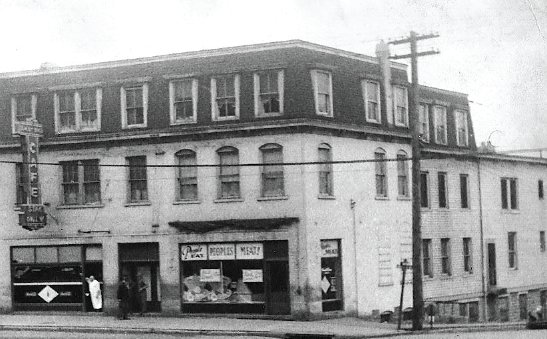Anyone who has visited the American Sign Museum or is a regular reader of this column knows that it’s the museum’s general policy not to repaint signs. Of the 600-plus signs currently in the museum’s collection, only five have been repainted. Two of the five are installed outside and would’ve continued to deteriorate if we had not repainted them. The majority of our signs are on display inside the museum, and for the most part, we leave the sign’s finish “as is” as part of that sign’s history.
Just recently, however, we added a sixth to our number of repainted signs. And not only was the sign repainted, but it was completely restored “from the ground up,” as is said.
The sign was for the East End Café – a Cincinnati landmark for more than a century. The sign is a 12-ft. vertical or “blade” style, most likely built and installed in the mid-1930’s as evidenced by its late-Art Deco lines. It had undergone a number of repaints – many done very poorly – over the years, and its neon was long gone when we acquired it in 2015. The original “STAG ONLY” copy had been covered over with the more politically correct “Established in 1887.” My sensibilities really wanted to get it back to the original copy, including the correct typeface, and as luck would have it, we were able to. Here’s how the restoration went:
Somewhere under the layers of paint was a clue to that original copy, so we began scraping off the paint with a razor blade. To our surprise, the paint was relatively easy to remove, again probably due to the thickness of the layers. Our go-to signpainter Tim McComas (Brushworks, Cincinnati) and I scraped awhile and soon found that we could actually see the original graphics once we got down to the bare metal. We then turned the job over to Martin Wartman, the son of Tom Wartman, who works in our in-house neon shop, Neonworks. Martin followed the sign down the street to United-Maier Signs, where it was moved to undergo further restoration. Once Martin had completely scraped the paint, McComas made patterns of the original lettering and Deco borders.
Three things happened at United-Maier. First, Bobby Ellis – United’s sheetmetal man – fashioned and spliced-in aluminum wherever the original sheetmetal had rusted out. Then United’s Steve Allegree primed and painted the entire sign cabinet with a forest green as was typical of signs in the ’30s and ’40s.
Despite the iconic status of the sign, our research resulted in obtaining only distant images of the original sign, and all were, of course, black-and-white. When it came time for McComas to letter the sign, he and I discussed a few color combinations and settled on what you see here. The format of the lettering and the Deco borders was definitely true to the original since McComas was able to make patterns from the bare metal. Once the sign was lettered, it was time for Martin and his father, Tom, to rewire the sign, and for Tom’s Neonworks partner, Greg Pond, to bend the glass.
Picking the colors of glass required another educated guess. Tom and I thought the noviol gold and clear red made sense given the paint’s color scheme. But we were puzzled by the positioning of the top and bottom border tubes. The half circle at the top made some sense, but the placement of a single line of neon under the “STAG ONLY” copy didn’t jibe with the neon borders wrapping the bullnose ends. Because we had scraped the paint down to the bare metal, we could see each and every original housing hole – some of which had been plugged late in the sign’s life. In the end, we configured the neon how we thought it had originally been placed, based on the housings.
The project was our first complete restoration. Although we’re not setting a precedent for future signs, I’m sure there will be more situations where a total restoration is in order, and we’ll be able to draw from our experience with the East End Café sign.



 Tip Sheet2 days ago
Tip Sheet2 days ago
 Business Management1 week ago
Business Management1 week ago
 Women in Signs1 week ago
Women in Signs1 week ago
 Real Deal3 days ago
Real Deal3 days ago
 Editor's Note7 days ago
Editor's Note7 days ago
 Maggie Harlow2 weeks ago
Maggie Harlow2 weeks ago
 Line Time1 week ago
Line Time1 week ago
 Product Buying + Technology1 week ago
Product Buying + Technology1 week ago









